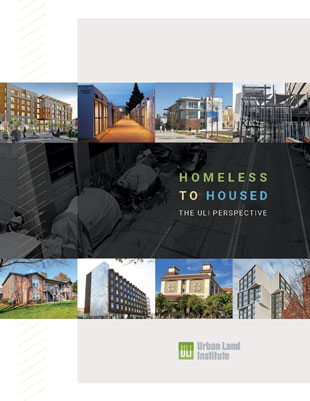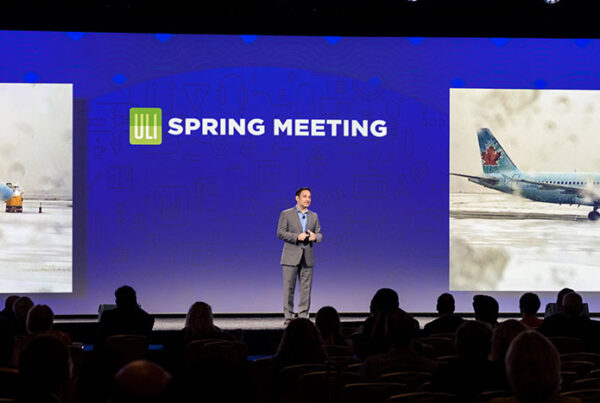
Edward Glaeser, the Fred and Eleanor Glimp Professor of Economics at Harvard University and a ULI trustee, speaking virtually to attendees of the 2021 ULI Asia Pacific Summit.
History shows that well-managed cities are resilient to the ravages of pandemics and will evolve to become even more resilient, economist Edward Glaeser told attendees at the 2021 ULI Asia Pacific Summit. The annual conference was held with some in-person sessions in Tokyo and other ULI members participating virtually in response to travel restrictions.
Opening the conference with a wide-ranging keynote, Glaeser, the Fred and Eleanor Glimp Professor of Economics at Harvard University and a ULI trustee, drew on 2,400 years of urban history to show how cities have coped with previous plagues, starting with Athens in 430 B.C., when a plague brought the Hellenistic heyday to a close.
More recently, such as following the cholera epidemics of the 19th century, cities have been able to adapt, as New York City was forced to, by improving its fresh water supply. But to carry out these improvements, cities need wealth and organization.
“You need incentives and institutions as well as infrastructure,” said Glaeser. “The board of health is only able to make things work because it knows who owns the land and is actually able to impose its requirements on them. This reminds us that urban land management was central to making the cities of the world in the 19th century livable and humane.”
The big question for global cities is whether people will want to keep working in them and interacting with each other, he said. Emergence of a more atomized society would have dramatic consequences for offices, and even greater ones for the service sector, which employs millions of less-qualified workers. Data for nations as diverse as Brazil, Germany, Italy, and Mexico show a huge decline in the number of daily commuters.
However, “knowledge is more important than space,” said Glaeser, noting that one of the first groups of workers to return to New York City was traders working for JPMorgan Chase. “Financial services may conceivably decamp from New York to Miami, but you can bet that its workers are still going to be coming together in person.” Glaeser noted that Google, one of the drivers of the knowledge economy, invested in occupational real estate throughout 2020.
He also pointed out that new relationships are much harder to forge without personal contact. “My existing relationships with graduate students are just fine over Zoom,” he said. “My ability to get 19-year-olds that I do not know excited about mathematical economics over Zoom is practically nonexistent.”
Glaeser acknowledged that the lure of the city is greater for younger workers, while older people are happier with working from home, which could lead to changing demand and demographics. “Cities will become younger, and that is not all bad,” he said.
However, he argued that while there is no reason to believe that city life is under threat, individual cities could be threatened due to the mobility of capital and people. Rich cities with high rents and land values will retain interest in the market, whereas secondary cities could see real estate owners walk away if values plummet, leading to a hollowing out of their central business districts.
The most livable cities will thrive in the fight for talent, and the strong response of Asian cities such as Singapore and Seoul to the COVID-19 pandemic will boost their attractiveness.
Glaeser also called for the formation of a “NATO for health”—a committed and funded global health organization to accelerate vaccine research and boost the health of cities in the developing world in order to make them more resilient to pandemics and other health shocks.
“I believe in the long run the solutions to the pandemics of the future, as well as the other problems that bedevil our urban world, will be found in the world’s cities,” he said.



